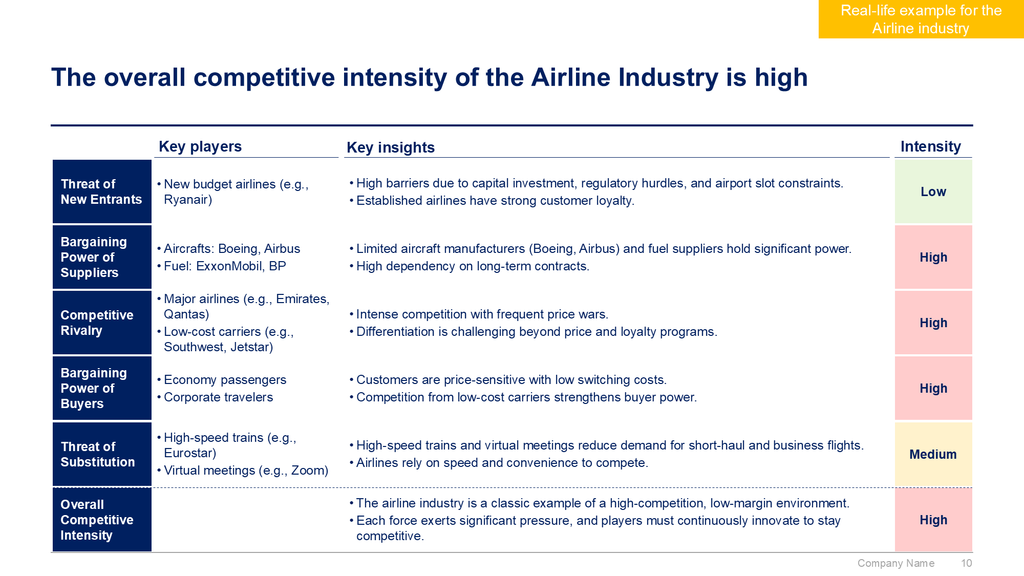Porter’s Five Forces - Template and Guide

Download our Porter’s Five Forces Template and Guide using a computer:
Porter's Five Forces Definition
Porter's Five Forces is a tool for assessing the attractiveness and profitability of a market by analyzing the forces acting upon it.
It identifies and analyzes five competitive forces that shape every market/industry.
The five forces are competition in the industry, potential of new entrants into the industry, power of suppliers, power of customers and threat of substitute products.
Five Forces analysis can be used to guide business strategy to increase competitive advantage. The model was created by Harvard Business School professor Michael E. Porter in 1979 and has since become an important tool for managers.
Porter's Five Forces Detailed Description
Competitive Rivalry: This force examines the intensity of the competition already present in an industry. The greater the rivalry, the harder it might be to enter the market and be profitable. Factors influencing this force include the number of competitors, the rate of industry growth, product or service complexity and uniqueness, and customer loyalty.
Supplier Power: This force examines the power of the suppliers. When suppliers have more power, they can charge higher prices or demand more favorable terms. Factors influencing this force include the number of suppliers, the uniqueness of their product or service, their strength and control over you, the cost of switching from one to another, and the amount of effort required to switch.
Buyer Power: This force looks at the power of the customers to drive prices down. If your customers have more power, your profitability may decrease. Factors influencing this force include the number of customers, their sensitivity to price, their bargaining power, the cost of switching, and their ability to substitute.
Threat of Substitutes: This force considers the potential for your customers to find a different way of doing what you do. For example, if you offer a unique software product that automates an important process, people might substitute by doing the process manually or by outsourcing it. Factors influencing this force include the availability of substitute products .
Threat of New Entrants: This force examines the ability of people or businesses to enter your market. If it's easy for others to enter your market and compete effectively, then the attractiveness and profitability of the market decrease. Factors influencing this force include the cost of entry, the technology and specialized knowledge requirements, legal and regulatory barriers, access to distribution channels, and economies of scale.
Need more help? Check our Toolkits:
- Corporate/Business Strategy and Strategic Planning Toolkit
- Management Consulting Toolkit
- Sales, Marketing & Communication Strategy Toolkit


